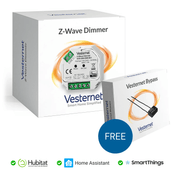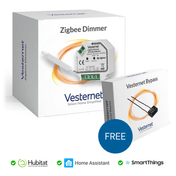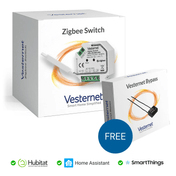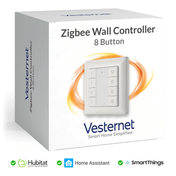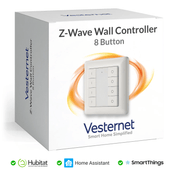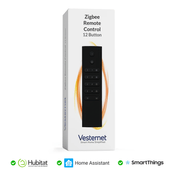As smart homes become increasingly sophisticated, the need for comprehensive entry monitoring has grown exponentially. Recent statistics show that break-ins occur every 26 seconds in the UK, with most intruders gaining access through doors and windows within the first few minutes. Traditional security measures are no longer sufficient for modern homeowners who require real-time awareness of access patterns, occupancy detection, and intelligent response systems that adapt to daily routines.
Door motion detection systems and advanced contact sensors form the foundation of intelligent entry monitoring, providing instant notifications when doors open or close whilst detecting movement patterns throughout your property. These systems offer seamless integration with broader smart home ecosystems, enabling automated lighting responses, HVAC adjustments, and security protocols that enhance both convenience and protection. Modern solutions combine traditional door contacts with sophisticated motion sensors, creating layered monitoring that captures comprehensive access data.
This comprehensive guide examines eight critical factors for selecting the perfect entry monitoring system, from protocol compatibility and detection range optimisation to advanced automation capabilities and weather resistance. Understanding these key considerations ensures you build a robust monitoring network that provides reliable performance, scales with your needs, and integrates seamlessly with your existing smart home infrastructure.
1. Protocol Compatibility and Smart Home Integration
The foundation of any effective entry monitoring system lies in selecting sensors that communicate seamlessly with your existing smart home ecosystem. Protocol compatibility determines not only immediate functionality but also long-term expandability and system reliability as you add new devices and automation rules.

Key protocol considerations include:
- Z-Wave networks offer reliable mesh communication with excellent range extension
- Thread/Matter protocols provide future-proof compatibility across major platforms
- Zigbee systems deliver energy-efficient communication with extensive device support
- Dual-protocol devices ensure maximum flexibility for mixed ecosystems
When planning your door motion monitoring setup, consider how protocol selection affects network stability and device response times. Z-Wave systems typically provide robust mesh networking that strengthens as you add more devices, whilst Thread-based sensors offer native compatibility with Apple HomeKit, Google Home, and Amazon Alexa platforms without requiring separate hubs.
2. Detection Range and Coverage Optimization
Effective motion detection requires careful consideration of range capabilities and coverage patterns to eliminate blind spots whilst minimising false alarms. Most quality sensors provide detection ranges of 7-8 meters, but the actual coverage area depends on mounting height, angle adjustment, and environmental factors that can affect performance.
Understanding detection zones helps optimise sensor placement for maximum effectiveness. Wide-angle sensors excel at monitoring large open areas, whilst narrow-beam detectors work better for hallways and specific entry points where focused monitoring prevents unnecessary triggers from adjacent spaces.
Coverage optimisation strategies:
- Position sensors at optimal heights (2.4-3 metres) for maximum range
- Angle adjustments to focus detection zones on critical areas
- Multiple sensors for complex layouts with natural obstructions
- Sensitivity calibration to distinguish between pets and human movement
3. Multi-Sensor Capabilities and Environmental Monitoring
Modern entry monitoring extends beyond simple door motion detection, incorporating environmental sensors that provide comprehensive room awareness and enable sophisticated automation rules. Multi-sensor devices combine motion detection with temperature, humidity, light intensity, and air quality monitoring in single compact units.

Integrated sensor benefits:
- Temperature data enables intelligent HVAC automation based on occupancy
- Light sensors trigger illumination only when natural light is insufficient
- Humidity monitoring prevents condensation issues near entry points
- Air quality detection maintains healthy indoor environments
These multi-function capabilities transform basic entry monitoring into comprehensive environmental management systems. For example, a door motion sensor with integrated light detection can automatically illuminate entry areas only during dark conditions, whilst temperature data helps maintain comfortable environments in frequently accessed spaces like mudrooms and foyers.
4. Installation Flexibility and Mounting Options
The practical success of entry monitoring systems depends heavily on installation flexibility and mounting options that accommodate diverse architectural features and aesthetic preferences. Modern sensors offer multiple mounting methods, from magnetic brackets and adhesive pads to screw-mount options for permanent installations.
Consider how installation method affects both detection patterns and visual integration with your interior design. Magnetic mounting provides easy adjustment and repositioning, whilst adhesive options work well for rental properties where permanent modifications aren't permitted. The yale door window contact installation typically requires strategic placement on door frames and adjacent walls for optimal gap detection.
Installation considerations:
- Magnetic mounting for easy repositioning and testing
- Adhesive options for temporary or rental property installations
- Corner mounting to maximise coverage area efficiency
- Recessed installation for completely hidden monitoring
5. Power Management and Battery Performance
Power management significantly impacts both functionality and long-term maintenance requirements of entry monitoring systems. Battery-powered sensors offer installation flexibility but require periodic replacement, whilst USB-powered options provide continuous operation and can serve as network repeaters to strengthen mesh networks.

Power option comparison:
- Battery-only operation provides maximum placement flexibility
- USB backup power eliminates battery replacement concerns
- Hybrid systems combine battery backup with mains power
- Low-power protocols extend battery life to 2+ years
Battery performance varies significantly based on transmission frequency, environmental conditions, and network efficiency. Sensors that communicate via energy-efficient protocols like Zigbee 3.0 or Thread typically achieve longer battery life compared to Wi-Fi alternatives, whilst those with USB power options can simultaneously strengthen your mesh network by acting as signal repeaters.
6. Advanced Automation and Scene Integration
Sophisticated entry monitoring systems enable complex automation scenarios that adapt to occupancy patterns, time of day, and environmental conditions. These automated responses transform basic detection into intelligent home management that enhances security, comfort, and energy efficiency without requiring manual intervention.
Advanced door motion sensors can trigger customised lighting scenes, adjust HVAC settings based on occupancy detection, and send different notification types depending on whether the system is armed or disarmed. Integration with smart locks, security cameras, and environmental controls creates comprehensive entry management that responds intelligently to various scenarios.
Automation possibilities include:
- Pathway lighting that activates only when motion is detected in dark conditions
- HVAC adjustments that respond to room occupancy and external temperature
- Security alerts that vary based on time of day and system status
- Energy-saving modes that reduce heating in unoccupied spaces
7. Outdoor Durability and Weather Resistance
Exterior entry monitoring requires sensors specifically designed for outdoor conditions, with weather resistance ratings and temperature operating ranges that ensure reliable performance throughout British seasonal variations. Outdoor sensors must distinguish between relevant motion and environmental factors like wind movement, small animals, or falling leaves.
Outdoor sensor requirements:
- IP65 or higher weather resistance ratings for protection against rain
- Operating temperature ranges from -20°C to +60°C for year-round reliability
- Pet immunity settings to prevent false alarms from cats and small dogs
- Flexible power options including low-voltage wiring for permanent installations
Quality outdoor motion sensors incorporate advanced algorithms that filter environmental interference whilst maintaining sensitivity to human movement. This ensures reliable perimeter monitoring for driveways, garden entrances, and outdoor storage areas without generating excessive false alarms that reduce system effectiveness.
8. Security Features and Alert Customization
Advanced entry monitoring systems incorporate robust security features including encrypted communication protocols, tamper detection, and sophisticated alert customization that prevents unauthorised access whilst minimising false alarms. These security capabilities ensure your monitoring system remains effective against evolving threats.
Modern sensors employ AES-128 encryption or similar security protocols that prevent signal interception, whilst tamper detection alerts you immediately if someone attempts to disable or relocate monitoring devices. Customizable notification systems allow different alert types for various scenarios, from silent monitoring during normal hours to immediate alerts during away periods.

Essential security features:
- Encrypted communication protocols preventing signal interception
- Tamper detection for physical security of sensor devices
- Adjustable sensitivity settings to minimise false alarms
- Customizable alert schedules for different times and scenarios
Our Entry Monitoring System Recommendations
MCO Home Multi Sensor for Comprehensive Environmental Monitoring
The MCO Home Multi Sensor delivers an impressive 9-in-1 sensor suite including motion, temperature, humidity, air quality, and smoke detection with a clear TFT display, making it ideal for users who want complete room awareness beyond basic entry monitoring. This advanced system combines door motion detection with comprehensive environmental data, enabling sophisticated automation rules that respond to multiple conditions simultaneously.
Aeotec TriSensor for Versatile Indoor Placement
The Aeotec TriSensor combines motion, temperature, and light sensors in an ultra-compact design weighing just 50 grams, offering flexible installation options including corner, shelf, beam, or recessed mounting for discreet monitoring. Its magnetic mounting system makes repositioning effortless, whilst the integrated light sensor ensures automated responses occur only when additional illumination is genuinely needed.
Heiman Thread Occupancy Sensor for Modern Smart Home Integration
The Heiman Thread Occupancy Sensor provides Matter-over-Thread connectivity ensuring future-proof compatibility across major ecosystems, with intelligent light-sensitive automation and temperature-compensated accuracy for consistent performance. This cutting-edge sensor represents the latest in smart home technology, offering native compatibility with Apple HomeKit, Google Home, and Amazon Alexa without requiring separate bridges or hubs.
Zooz Outdoor Motion Sensor for Reliable External Monitoring
The Zooz Outdoor Motion Sensor features weather-resistant construction, flexible power options (battery or 12-24V supply), and Smart Start setup with customizable sensitivity settings perfect for perimeter security and outdoor lighting automation. Its robust design handles British weather conditions whilst the pet immunity feature prevents false alarms from neighbourhood cats and small animals.
Zooz Mini Motion Sensor for Budget-Conscious Installations
The Zooz Mini Motion Sensor offers essential motion detection with optional USB power for signal repeating functionality, magnetic mounting, and adjustable sensitivity settings in a minimalist design suitable for any interior. Despite its compact size, this sensor provides reliable door motion monitoring with the flexibility to serve dual roles as both detector and network strengthener when USB-powered.
Conclusion
Implementing a comprehensive entry monitoring system transforms both security and convenience, providing instant awareness of access patterns while enabling sophisticated automation that adapts to your lifestyle and enhances energy efficiency. The combination of door contacts and motion sensors creates layered detection that captures comprehensive access data, from initial entry detection to occupancy awareness throughout your property.
Start by identifying your specific monitoring needs—whether focusing on single-point entry detection or comprehensive multi-room coverage—then select sensors that align with your existing smart home protocol and expansion plans. Consider factors like installation environment, power requirements, and desired automation complexity to build a system that grows with your needs. Remember that proper yale door window contact installation forms the foundation of reliable entry detection, whilst motion sensors provide the occupancy awareness needed for advanced automation scenarios.
Explore Vesternet's complete range of motion sensors and door monitoring solutions to find the perfect components for your entry monitoring system. Our expert team is available to provide personalised advice on creating the ideal setup for your specific requirements and smart home goals, ensuring you achieve optimal performance from your investment in intelligent entry monitoring technology.










